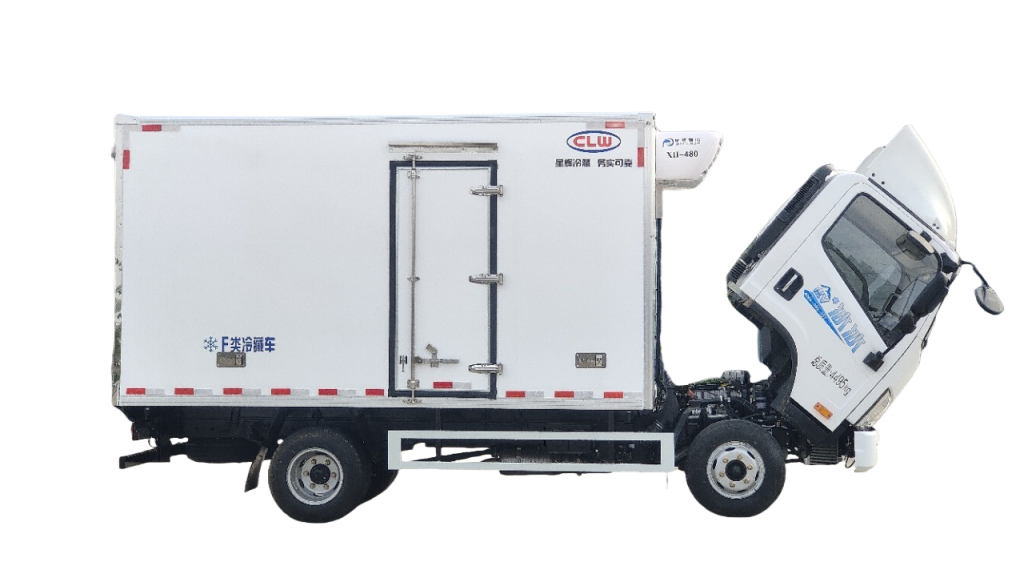Maximizing Work Truck Towing Capacity A Comprehensive Guide

Introduction
Work trucks play a crucial role in various industries, from construction to agriculture, by transporting heavy loads and equipment to different locations. One of the key factors that determine the efficiency and effectiveness of a work truck is its towing capacity. Understanding the towing capacity of a work truck is essential for ensuring safety, maximizing productivity, and avoiding costly accidents or damage.
In this comprehensive guide, we will delve into the concept of work truck towing capacity, explore the factors that influence towing capacity, discuss how to calculate towing capacity accurately, and provide practical tips for maximizing towing capacity while maintaining safety standards.
Understanding Towing Capacity
Towing capacity refers to the maximum weight that a vehicle, such as a work truck, can safely tow behind it. It is important to note that towing capacity is not solely determined by the power of the engine but is influenced by a combination of factors, including the vehicle's structural design, suspension system, braking capabilities, and overall stability.
Manufacturers assign a specific towing capacity to each model of work truck to provide guidelines for safe operation. Exceeding the recommended towing capacity can lead to mechanical strain on the vehicle, compromised handling, reduced braking efficiency, and an increased risk of accidents.
Factors Influencing Towing Capacity
1. Engine Power: The engine power of a work truck is a significant factor in determining its towing capacity. A more powerful engine can generate the necessary torque to tow heavier loads efficiently. However, engine power alone does not determine towing capacity, as other factors come into play.
2. Transmission and Gear Ratios: The transmission system of a work truck, along with its gear ratios, affects the vehicle's ability to tow heavy loads. Trucks with lower gear ratios are typically better equipped for towing, as they provide more torque at lower speeds.
3. Frame and Suspension: The structural design of a work truck's frame and suspension system plays a crucial role in its towing capacity. A sturdy frame and well-designed suspension can support heavier loads and distribute weight more effectively, improving stability and handling while towing.
4. Braking System: The braking system of a work truck is essential for safely towing heavy loads. A robust braking system, including larger brake components and advanced braking technology, is crucial for maintaining control and stopping power while towing.
5. Axle Ratio and Differential: The axle ratio and type of differential in a work truck impact its towing capacity. Trucks with higher axle ratios and limited-slip differentials are better suited for towing heavy loads, as they provide more power to the wheels and improve traction.
Calculating Towing Capacity
To determine the towing capacity of a work truck accurately, it is essential to consider the following factors:
1. Gross Vehicle Weight Rating (GVWR): The GVWR is the maximum allowable weight of a fully loaded vehicle, including passengers, cargo, and fuel. It is a key factor in calculating towing capacity, as exceeding the GVWR can lead to mechanical strain and safety hazards.
2. Gross Combination Weight Rating (GCWR): The GCWR is the maximum allowable weight of the fully loaded vehicle and any trailer it is towing. To calculate towing capacity, subtract the GVWR from the GCWR to determine the maximum weight the vehicle can tow safely.
3. Curb Weight: The curb weight of a vehicle is the weight of the vehicle without any passengers or cargo. Knowing the curb weight is essential for calculating towing capacity, as it provides a baseline for determining how much additional weight the vehicle can safely tow.

4. Tongue Weight: Tongue weight refers to the downward force exerted on the hitch ball by the trailer. Properly distributing tongue weight is crucial for maintaining stability while towing and preventing trailer sway.
Maximizing Towing Capacity
To maximize the towing capacity of a work truck while ensuring safety and efficiency, consider the following tips:
1. Properly Maintain Your Work Truck: Regular maintenance, including checking tire pressure, fluid levels, brakes, and suspension components, is crucial for ensuring that your work truck operates at peak performance while towing heavy loads.
2. Use Weight Distribution Hitches: Weight distribution hitches help distribute the weight of the trailer more evenly across the axles of the work truck, improving stability and handling while towing.
3. Upgrade to a Heavy-Duty Truck: If you frequently tow heavy loads, consider upgrading to a heavy-duty work truck with a higher towing capacity. Heavy-duty trucks are designed to handle more substantial loads and provide better towing performance.
4. Invest in Trailer Brakes: Adding trailer brakes to your trailer can improve stopping power and control while towing heavy loads. Trailer brakes work in conjunction with the work truck's braking system to reduce the risk of accidents and improve safety.
5. Know Your Limits: It is crucial to know the towing capacity of your work truck and adhere to manufacturer guidelines. Exceeding https://www.worktruckmaker.com/water-tank-truck/ recommended towing capacity can lead to mechanical strain, compromised safety, and increased risk of accidents.
Conclusion
Understanding work truck towing capacity is essential for maximizing productivity, ensuring safety, and avoiding costly accidents. By considering factors such as engine power, transmission, frame design, braking system, and axle ratios, you can accurately calculate the towing capacity of your work truck and make informed decisions about towing heavy loads.
By following practical tips such as proper maintenance, using weight distribution hitches, upgrading to a heavy-duty truck, investing in trailer brakes, and knowing your limits, you can maximize the towing capacity of your work truck while maintaining safety standards and achieving optimal performance. Remember that safety should always be the top priority when towing heavy loads with a work truck.
